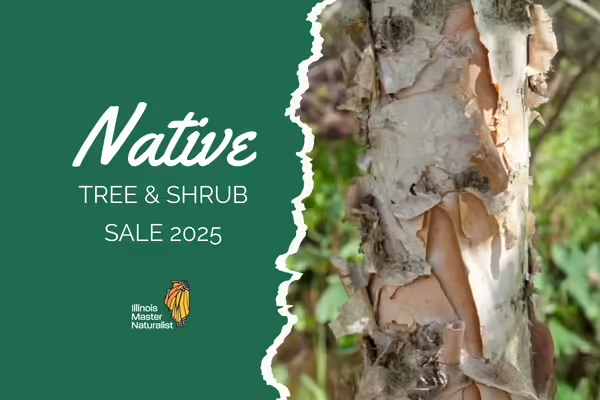
URBANA, Ill. – The East Central Illinois Master Naturalists will host their annual Native Tree and Shrub Sale in October, offering residents the opportunity to add native plants to their landscapes while supporting local conservation efforts.
Orders will be accepted through Oct. 1, 2025, or while supplies last. The sale includes a variety of native species well-suited to the Illinois climate and designed to benefit pollinators, improve soil health, and support wildlife.
Prices (including sales tax):
– Trees: $35 each
– Shrubs: $25 each
– Forbs: $10 each
A complete list of plants, descriptions, and growing details is available at: go.illinois.edu/NativeSale. Buyers are encouraged to download the tree and shrub catalog and the forb information sheet before placing an order.
Why native plants matter
Native plants are adapted to Illinois soils and weather conditions, making them hardy and low-maintenance. They also provide food and habitat for pollinators, birds, and other wildlife. By planting native trees, shrubs, and forbs, residents can help restore ecosystems, improve water quality, and create more resilient communities.
Plant pickup details:
– Location: Urbana Park District Planning and Operations Facility, 1011 Kerr Ave., Urbana, IL 61802
– Hours: Friday, Oct. 17, noon to 4 p.m. and Saturday, Oct. 18, 9 a.m. to 4 p.m.
For more information, visit the sale website at go.illinois.edu/NativeSale or call the Extension Office at 217-333-7672.
University of Illinois Extension develops educational programs, extends knowledge, and builds partnerships to support people, communities, and their environments as part of the state's land-grant institution. Extension serves as the leading public outreach effort for University of Illinois Urbana-Champaign and the College of Agricultural, Consumer and Environmental Sciences in all 102 Illinois counties through a network of 27 multi-county units and over 700 staff statewide. Extension’s mission is responsive to eight strategic priorities — community, economy, environment, food and agriculture, health, partnerships, technology and discovery, and workforce excellence — that are served through six program areas — 4-H youth development, agriculture and agribusiness, community and economic development, family and consumer science, integrated health disparities, and natural resources, environment, and energy.